Growing, care and propagation of Sidalcea
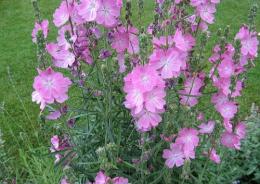
Sidalcea is a very original and unpretentious plant for a flower garden. It has gained popularity among flower growers due to its undemanding nature to the soil and the absence of diseases to which most beautifully flowering plants are susceptible. Having planted sidalcea as a border plant or decorated a flower bed with delicate flowers, you can not think about rejuvenating the bush, fertilizing and replanting for several years.
Content:
Origin of Sidalcea
The herbaceous plant of the same name from North America is considered to be the birthplace of Sidalcea garden. Belonging to the malvaceae family, Sidalcea is strikingly similar to the stock rose, known to all gardeners: it has the same straight, spike-shaped peduncle, strewn with inflorescences of all shades of pink and red, and rounded leaves are collected in a rosette located at the bottom of the stem.
The only difference is the size of the plant - the height of the sidalcea does not exceed 1 meter, while the rose stock reaches 3 meters in height.
Under natural conditions, Sidalcea grows in clearings open to sunlight, surrounded by many plants. While creating cultivars Breeders have preserved such qualities of the plant as high compatibility with many crops, frost resistance, and increased resistance to pathogens.
This allows the plant to be used as a border, to fill the vacant spaces in the flowerbed among other flowering low-growing plants, as well as in mixborders.
The most popular varieties of garden sidalcea are:
- William Smith
- Rose Queen
- Diamond
- Elsie Heugh
- Little Princess
The variety of shades of garden Sidalcea allows arrange a flower garden in almost any color scheme. The plant’s ability to get along with other representatives of the flora has made it one of the most popular among gardeners.
Sidalcea - planting and care
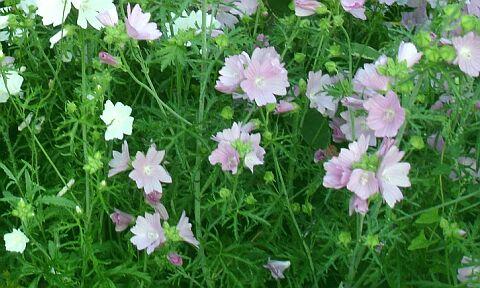
Sow the seeds Sidalcea begins in the spring, when the average air temperature during the day rises to above 10 degrees Celsius. Sow seeds in moist, well-loose soil. The planting depth is from 2 to 3.5 cm. After sowing, the bed must be compacted and watered abundantly with cool water. Sidalcea shoots appear within 2-3 weeks. If the seedlings are located too often, they need to be thinned out, leaving at least 10-15 cm between plants.
After the formation of four true leaves, the seedlings are thinned out again, leaving a distance of 40-75 cm between them. The removed seedlings can be carefully transplanted to other flower beds.
Sidalcea care comes down to the following procedures:
- Timely watering, combined with fertilizing with universal fertilizer for garden flowers. The plant does not tolerate drying out of the substrate surrounding the roots, so Sidalcea needs to be watered at least three times a week.
- Mulching the soil around plants with humus or mowed dry grass to prevent the top layer of soil from quickly drying out.
- Weeding and loosening the soil around Sidalcea plantings.
- Trimming stems with faded flowers to the root. This way you can limit the formation and ripening of seeds, which directly affect the duration and splendor of Sidalcea flowering for the better.
- With the onset of constant cold weather, the plants slightly cover with leaf litterHowever, in the middle zone, Sidalcea winters well without shelter.
Despite its unpretentiousness, it is better to plant Sidalcea on cultivated garden soil, free of weeds. It is good if the landing site is well lit by the sun during the day. Although Sidalcea tolerates light shading, in good light its flowering is longer and brighter, and the bushes look more attractive due to the abundance of leaves and peduncles.
Reproduction of Sidalcea
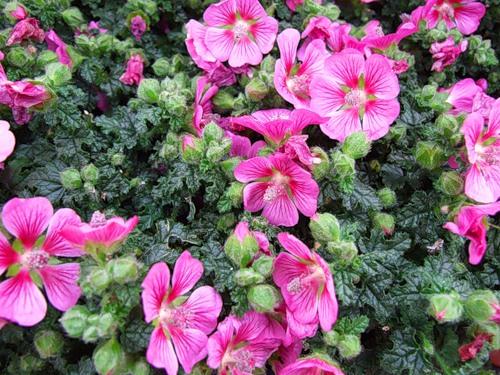
Root rosettes are used as planting material for propagation of sidalcea, which are best replanted in early spring before the growth points awaken. The roots of the plant are thin, so it is necessary to separate young shoots from the mother bush with care so as not to damage the short central rhizome.
After separation, it is important to immediately plant young plants, since overdrying of the roots negatively affects the survival rate of the sidalcea. For longer storage, young rosettes are separated with a small lump of earth, after which they are immediately placed in a strong, airtight container, which will protect the roots from drying out and injury.
Sidalcea seeds, intended for sowing in the spring of next year, they are harvested fully ripe. The ripening of seeds can be recognized by the appearance of the seed capsule - it becomes brown.The seeds, located inside the box in a ring, are separated from each other, but do not spill out of it. Store collected seeds in a dry, cool place. When propagated by seeds, Sidalcea blooms only after wintering, and with basal rosettes - in the year of planting.
Sidalcea is one of the few plants that, with a minimum of physical and material costs for care, continues to bloom from the beginning of summer until the onset of the first frost. This unpretentious and very beautiful plant is loved by many gardeners around the world precisely for these qualities.
Watch the video for everything about growing flower seedlings:
Interesting information about the vegetable garden






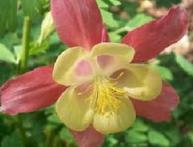

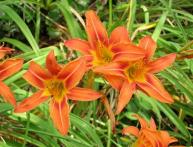
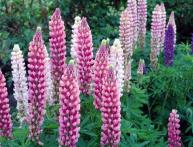

Comments
But it seems to me that this flower absolutely does not need to be propagated - it grows on its own. A friend had one of these planted near her house, but then they simply pulled it out like a weed, otherwise it began to spread further and further than necessary.